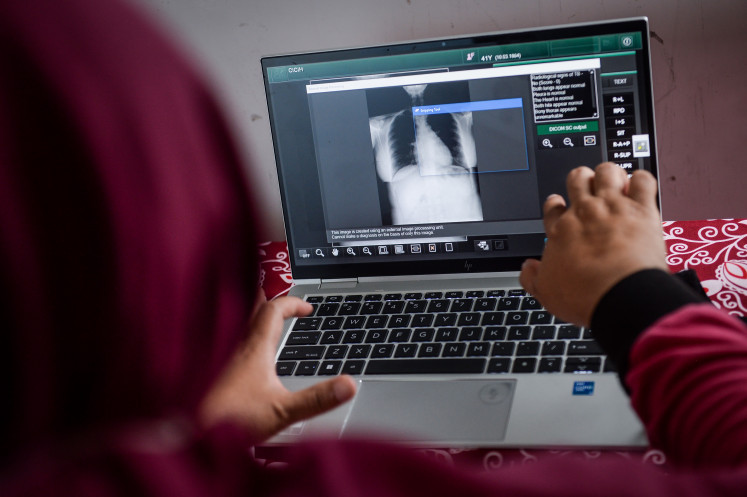Popular Reads
Top Results
Can't find what you're looking for?
View all search resultsPopular Reads
Top Results
Can't find what you're looking for?
View all search resultsThe massive IT outage and digital resilience
Achieving digital resilience is challenging when companies depend heavily on tech giants like Microsoft, Amazon and Google.
Change text size
Gift Premium Articles
to Anyone
 Travelers wait for delayed flights on July 19, 2024, beneath a monitor displaying a blue error screen, also known as the ?Blue Screen of Death? inside Terminal C in Newark International Airport, after United Airlines and other airlines grounded flights because of a worldwide tech outage caused by an update to Crowdstrike's “Falcon Sensor“ software which crashed Microsoft Windows systems, in Newark, New Jersey, the United States. (REUTERS/Bing Guan)
Travelers wait for delayed flights on July 19, 2024, beneath a monitor displaying a blue error screen, also known as the ?Blue Screen of Death? inside Terminal C in Newark International Airport, after United Airlines and other airlines grounded flights because of a worldwide tech outage caused by an update to Crowdstrike's “Falcon Sensor“ software which crashed Microsoft Windows systems, in Newark, New Jersey, the United States. (REUTERS/Bing Guan)
T
he global information technology (IT) outage caused by a faulty update from CrowdStrike last week highlights our deep dependence on digital systems. This incident affected services worldwide, including government agencies, airlines, banks and hospitals, showing the fragility of our IT ecosystems.
As economies and national security systems become more digital, the consequences of such failures grow more severe. This event reminds us of the need for strong digital resilience to prevent and reduce the impact of such incidents. It also underscores the importance of maintaining a diverse and adaptable IT infrastructure that can withstand and recover from disruptions.
The CrowdStrike outage has taught us a clear lesson: We must have digital resilience and be better prepared for IT failures. The interconnected nature of modern IT systems means a single error can lead to disruptions across many sectors. The outage showed how such incidents can cause chaos, affecting critical services and reducing trust in digital systems.
Preparation means building more resilient systems and having contingency plans ready. Organizations should diversify their IT resources, avoid relying on one provider and set up strong backup systems. Regular stress testing and proactive monitoring can identify vulnerabilities before they cause failures. Training staff to handle IT issues and keeping clear communication channels during outages is also crucial. These steps can help reduce the impact of future incidents.
Digital resilience is the ability of individuals, organizations and societies to anticipate, manage and recover from digital disruptions swiftly, ensuring continuous operation and adapting to future challenges for enhanced digital safety and effectiveness. It is essential for reducing the impact of IT disruptions and ensuring a quick recovery.
Systems must be able to withstand and adapt to unexpected failures. This includes designing IT infrastructures with redundancy and failover mechanisms that allow operations to continue smoothly even when a primary system fails. Implementing automated monitoring and response systems can help detect and address issues before they escalate.
Digital resilience also requires a cultural shift within organizations, emphasizing the importance of cybersecurity and continuously improving IT practices. Organizations can better protect themselves against IT outages by fostering a proactive approach to managing digital risks.


















